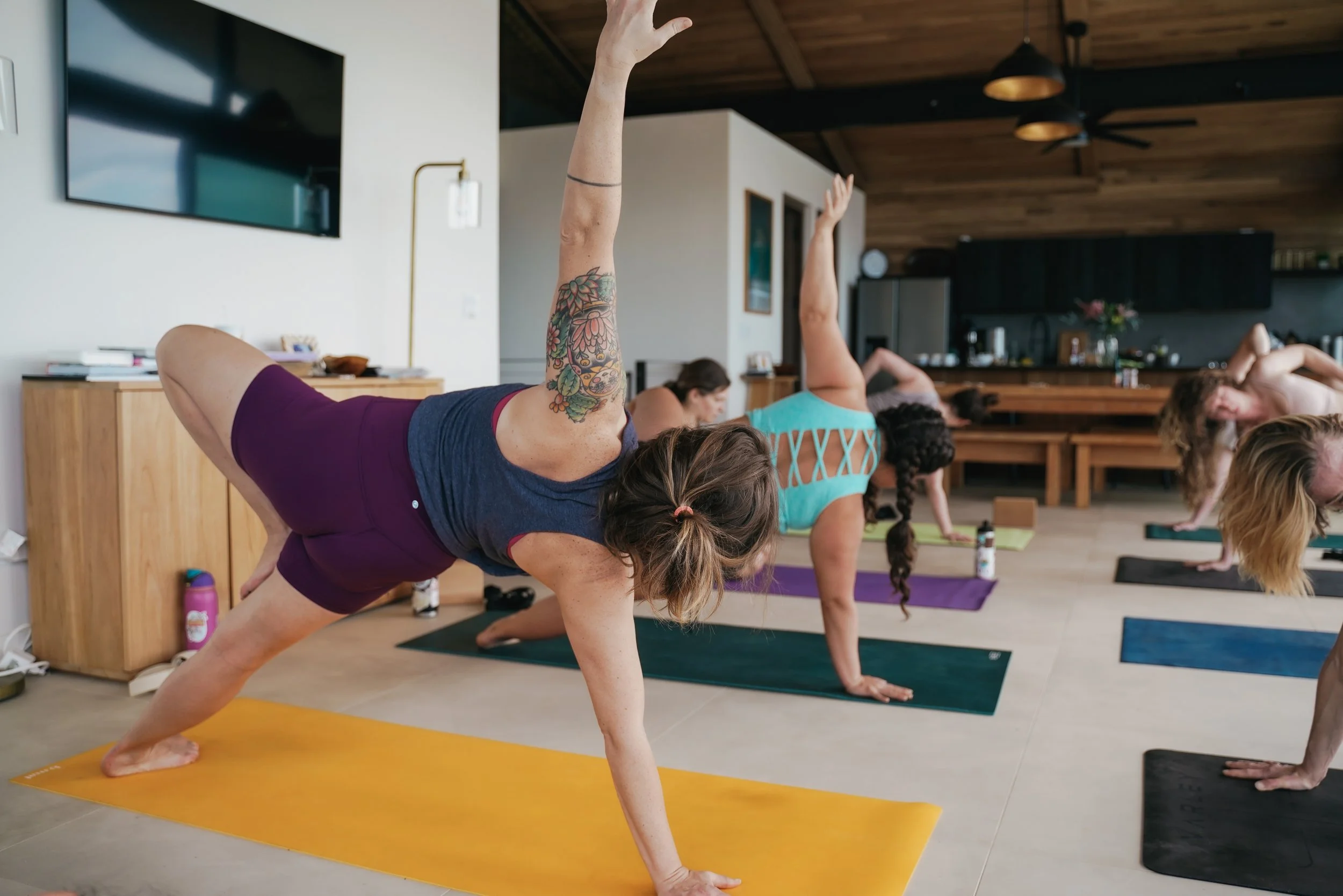Finding Joy in Movement & Fueling Your Body for Strength, Energy, and Recovery
Posing in Costa Rica
For as long as I can remember, movement has been a huge part of my life. I started exercising at a gym in high school where I regularly went to group fitness classes or spent (way too much) time on cardio machines. My joy for exercise and movement then pushed me into team sports. I was a collegiate athlete, rowing on a weight-based team at UW-Madison, where I first started working with a dietitian. That experience didn’t just change my performance—it changed my entire career path. I shifted my major from psychology to nutrition, then went on to become a personal trainer and group fitness instructor before becoming a dietitian. But even with all that experience, I didn’t always have a healthy relationship with exercise. It took years of learning (and unlearning) to move away from the idea that exercise is just about burning calories, earning food, or shrinking my body and instead focus on what movement adds to my life.
Joyful Movement: Moving for More Than Weight Loss
If you’ve ever had a complicated relationship with exercise, you’re not alone. Many of us grew up in a culture that told us movement is something we have to do to earn or burn off food. But when exercise is only seen as a tool for weight loss, it becomes unsustainable. Instead of forcing ourselves into workouts we dread, what if we reframed movement as something that enhances our lives?
For me, movement brings so much more than just physical benefits—it improves my sleep, calms my restless legs, gives me more patience with my kids, helps me focus or clear my head, and gives me time to be in nature or listen to things that bring me joy. And recently, after spending a lot of time strength training at the gym, I attended a yoga retreat in Costa Rica that reignited my love for breathwork, mobility, and mindful movement. That experience reminded me that movement doesn’t have to be one thing—it can (and should) evolve as we do.
What Does Sustainable Movement Look Like?
The World Health Organization (WHO) recommends at least 150–300 minutes of moderate activity or 75–150 minutes of vigorous activity per week, plus muscle-strengthening exercises twice a week. But let’s take that with a grain of salt. If you’re starting from scratch, those numbers might feel overwhelming. The key to sustainable movement isn’t following strict guidelines—it’s starting where you are and finding what feels good in your body. That could mean:
Short walks outside to get fresh air and movement.
Gentle yoga to stretch and reconnect with your breath.
Strength training to feel stronger in daily activities.
Dancing in your kitchen because it feels good.
Movement should support your life, not control it. And just like our workouts evolve, so should the way we fuel them.
Fueling Your Body to Support Movement
When we move our bodies regularly—whether it’s weightlifting, HIIT, yoga, swimming, hiking—our nutrition should work with us, not against us. Proper pre- and post-workout fueling isn’t about following rigid rules; it’s about giving your body what it needs to perform well, recover fully, and feel good.
Before Your Workout: Energy & Performance
Carbohydrates: Your body’s go-to fuel source for movement. Eating carbs before a workout ensures your glycogen stores are ready to power you through. Aim for 0.5–1g of carbs per kg of body weight 30–120 minutes before exercise.
Protein: Helps provide amino acids to minimize muscle breakdown. A pre-workout snack with 10-20g of protein can support muscle repair.
When talking about pre-workout fueling, I always tell my clients to experiment to find what works best for THEM. If you’re waking up at 5am to workout, eating a full meal beforehand probably isn’t going to work for you and an empty stomach might not work for you either… find your happy medium and go with that!
Example Snack: A banana with peanut butter or Greek yogurt with a drizzle of honey.
After Your Workout: Recovery & Muscle Repair
Protein: Crucial for muscle repair and growth. Research suggests 20–40g of protein within 30 minutes to 2 hours post-workout is ideal.
Carbohydrates: Helps replenish glycogen stores and restore energy. 1–1.5g of carbs per kg of body weight is recommended post-exercise.
Protein-to-Carb Ratio:
For muscle gain: A 1:2 to 1:3 ratio of protein to carbs works well.
For fat loss: Focus on lean protein and moderate carbs to fuel recovery while preserving lean muscle.
Note: Intense exercise can blunt hunger signals, but it’s still important to refuel. You may also notice increased hunger the day after intense exercise.
Example Meal: Scrambled eggs on whole-grain toast with avocado or a protein smoothie with frozen berries and almond milk.
Want more easy, evidence-based meal and snack ideas? Grab my free pre- & post-workout nutrition handout sent straight to your inbox!
To truly become embodied in our movement, we need to listen to what feels good for our bodies. What energizes you? What brings you joy? What helps you feel strong and capable? That’s the kind of exercise worth prioritizing.

